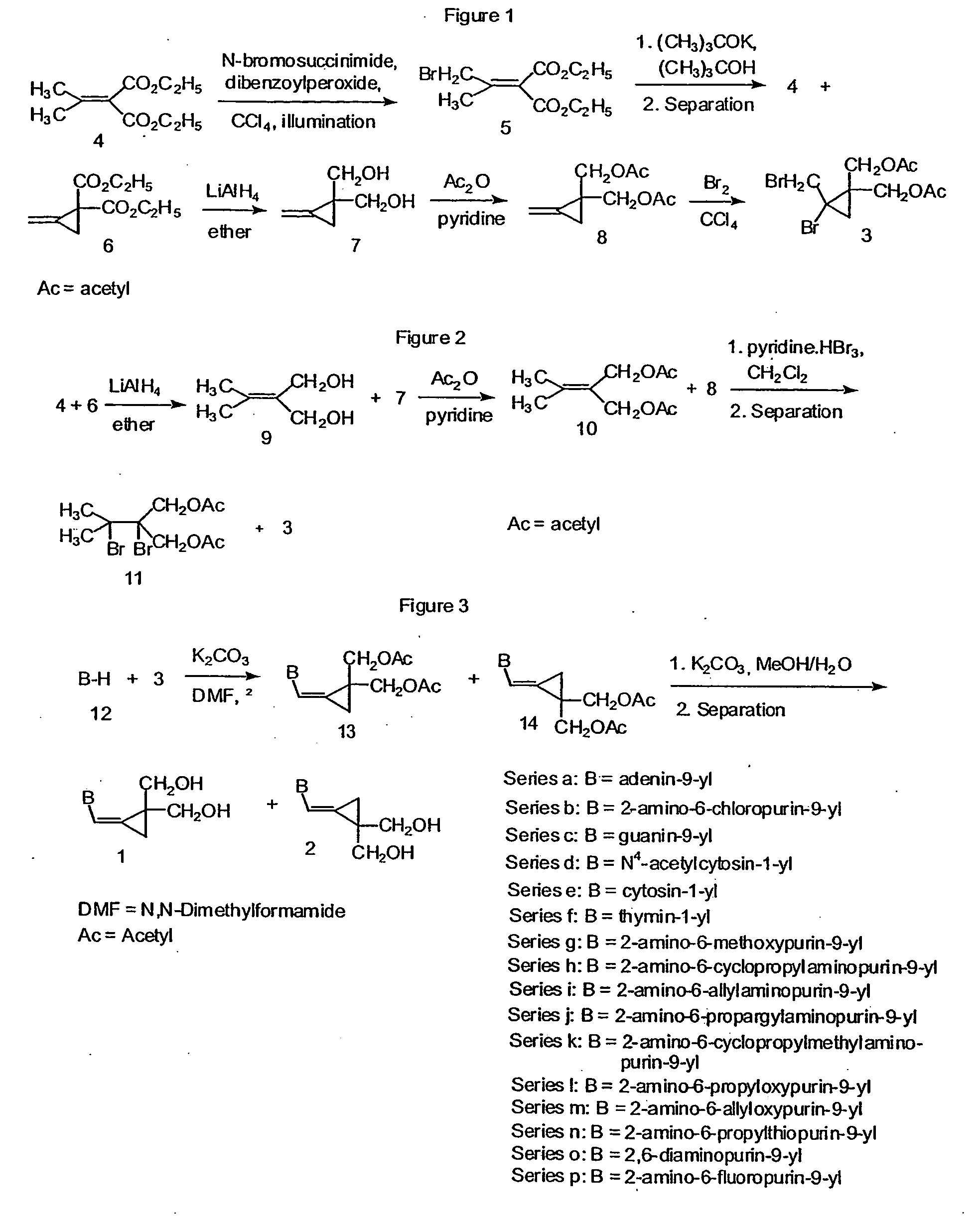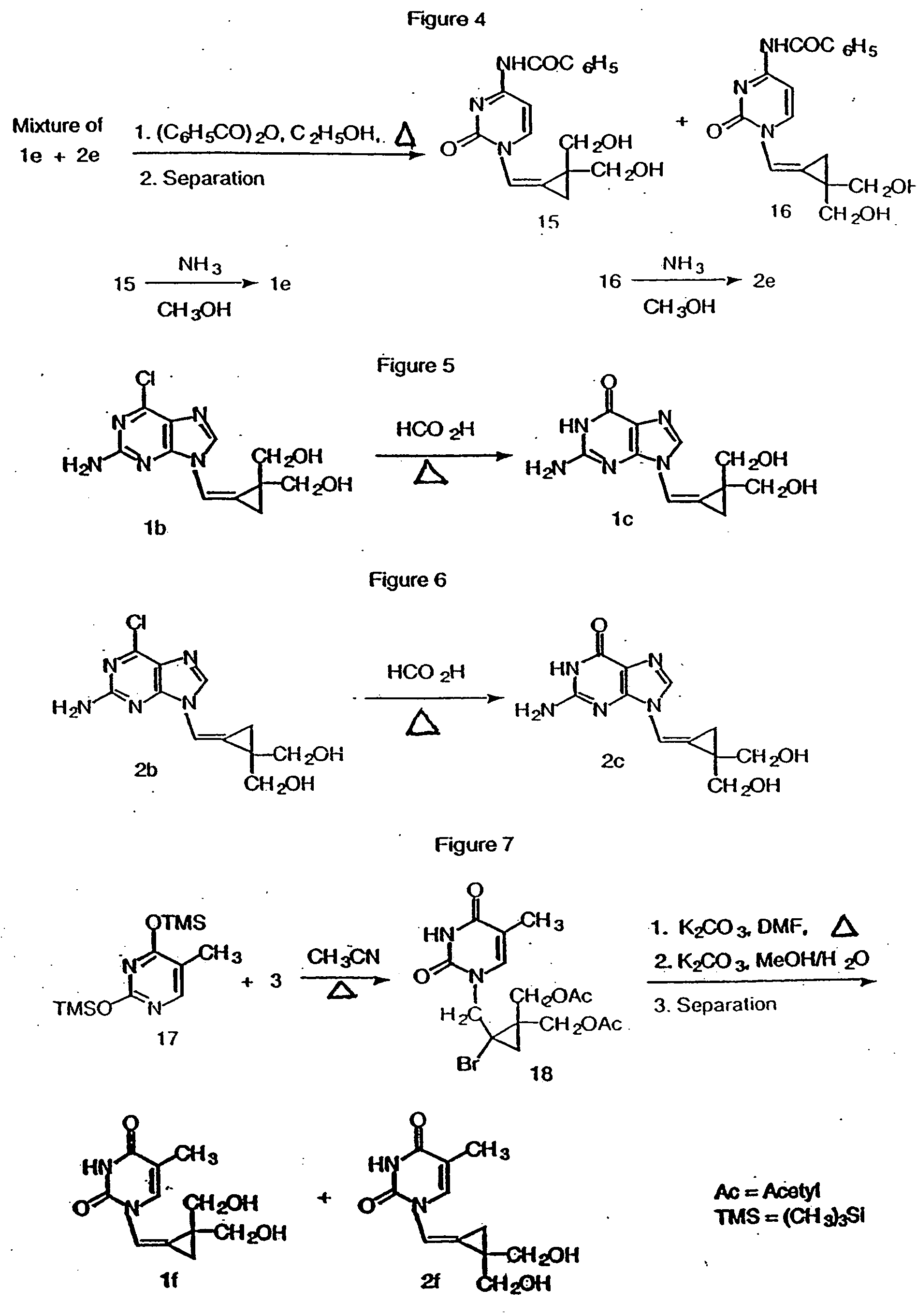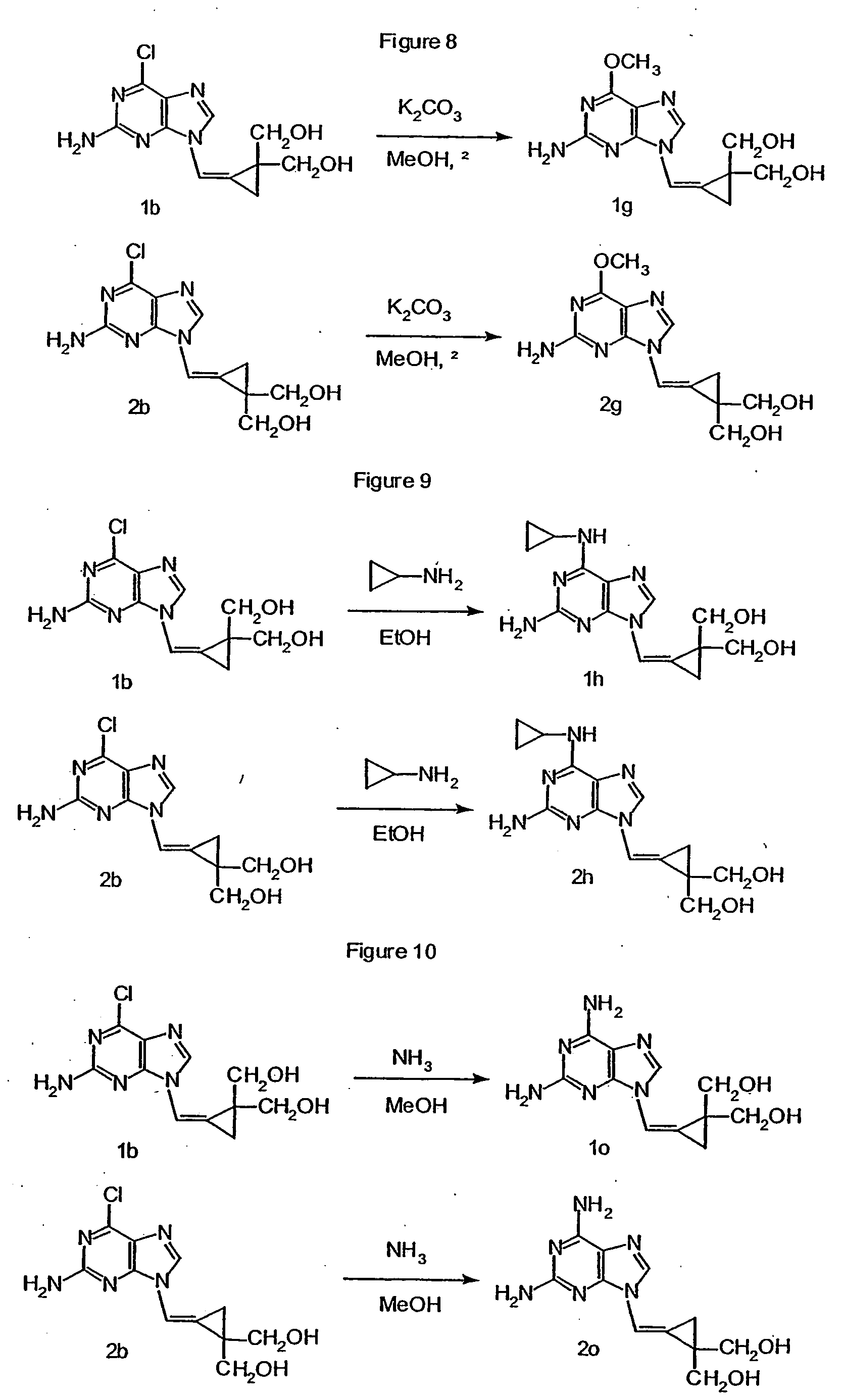2,2-bis-(hydroxymethyl)cyclopropylidenemethyl-purines and pyrmindines as antiviral agents
a technology of pyrimidine and hydroxymethyl-purines, which is applied in the field of purine and pyrimidine compounds, can solve the problems of paralysis, convulsions and ultimately death, morbidity and mortality, and serious complications of infection with vzv
- Summary
- Abstract
- Description
- Claims
- Application Information
AI Technical Summary
Benefits of technology
Problems solved by technology
Method used
Image
Examples
example 1
Synthesis of Diethyl Bromoisopropylidenemalonate (5)
[0063] Diethyl isopropylidenemalonate (4, 50 g, 0.25 mol) was refluxed with stirring with N-bromosuccinimide (44.3 g, 0.25 mol) and dibenzoyl peroxide (1.0 g, 4.1 mmol) in carbon tetrachloride (100 mL) with illumination using Kodak Ectagraphic slide projector lamp ELH (300 Watt) for 1.5 h. The reaction was completed as indicated by a negative starch-iodine test for N-bromosuccinimide. The resulting mixture was diluted with carbon tetrachloride (100 mL) and it was cooled in an ice-bath. The precipitated succinimide was filtered off and the filtrate was evaporated in vacuo at room temperature. The residual pale yellow oil of diethyl bromo-isopropylidene-malonate (5, 71.1 g) was used without purification in the Example 2.
example 2
Diethyl Methylenecyclopropane-2,2-dicarboxylate (6)
[0064] Compound 5 (43.4 g, 0.156 mol) from Example 1 was added to a vigorously stirred refluxing solution of potassium tert-butoxide (17.5 g, 0.156 mol) in tert-butyl alcohol (500 mL) under nitrogen. The stirring was continued for 15 min. and the mixture was immediately cooled in an ice bath. Acetic acid was then added, the solid portion was filtered off and thoroughly washed with ether. The filtrate was concentrated in vacuo, diluted with ether and the organic layer was washed several times with water. After drying with magnesium sulfate, the solution was evaporated in vacuo and the residue was distilled, bp. 99-93° C. / 0.3 torr, yield 14.8 g (47%) of a 1:1 mixture of 4+6. This mixture was chromatographed on a silica gel column using first hexanes-ether (40:1) and then (20:1) to give product 6 (7.3 g, 23%) as a colorless liquid.
[0065]1H NMR (CDCl3,300 MHz) δ 1.24 (t, 6H, J=7.2 Hz, CH3), 2.15 (t, 2H, J=2.4 Hz, H3), 4.17 (q, 4H, J=7...
example 3
2,2-(Bis-hydroxymethyl)methylenecyclopropane (7)
[0066] A solution of diethyl methylenecyclopropane-1,1-dicarboxylate (6, 6.50 g, 32 mmol) from Example 2 in ether (60 mL) was added to a stirred suspension of lithium aluminum hydride (1.90 g, 51 mmol) in ether (50 mL) at such a rate to maintain a gentle reflux. The resultant mixture was refluxed for 15 h. It was then quenched carefully with water (4 mL) and 2 M sodium hydroxide (8 mL). The ether phase was separated and the remaining white precipitate was extracted with ether. Ether from combined organic phases was distilled off using a Vigreux column to give 2,2-bis-(hydroxymethyl)methylenecyclopropane (7, 2.84 g, 78% yield) as a residue (colorless oil). The 1H-NMR spectrum was identical to that described by Dolbier, W. R., et al., J. Am. Chem. Soc. 93:3933-3940 (1971).
PUM
| Property | Measurement | Unit |
|---|---|---|
| Length | aaaaa | aaaaa |
| Time | aaaaa | aaaaa |
| Time | aaaaa | aaaaa |
Abstract
Description
Claims
Application Information
 Login to View More
Login to View More - R&D
- Intellectual Property
- Life Sciences
- Materials
- Tech Scout
- Unparalleled Data Quality
- Higher Quality Content
- 60% Fewer Hallucinations
Browse by: Latest US Patents, China's latest patents, Technical Efficacy Thesaurus, Application Domain, Technology Topic, Popular Technical Reports.
© 2025 PatSnap. All rights reserved.Legal|Privacy policy|Modern Slavery Act Transparency Statement|Sitemap|About US| Contact US: help@patsnap.com



